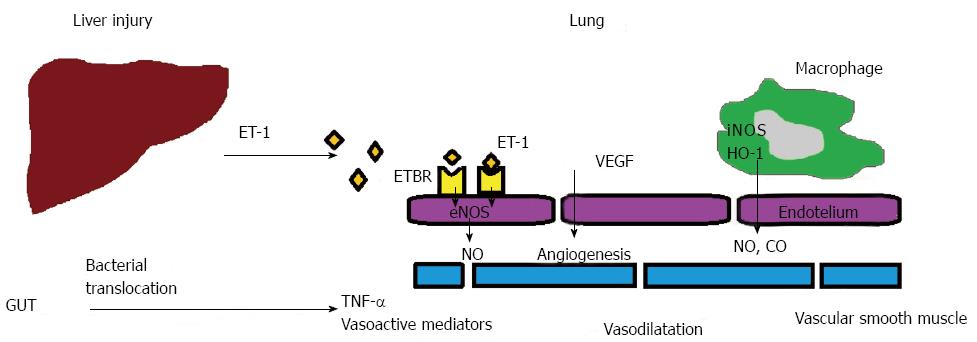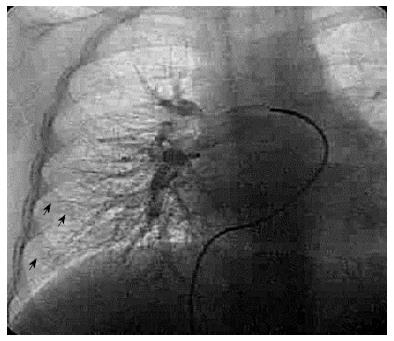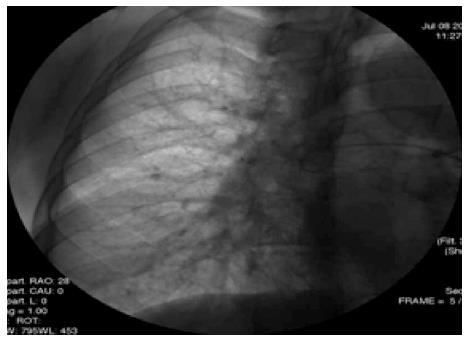Copyright
©2014 Baishideng Publishing Group Co.
World J Gastroenterol. Mar 14, 2014; 20(10): 2586-2594
Published online Mar 14, 2014. doi: 10.3748/wjg.v20.i10.2586
Published online Mar 14, 2014. doi: 10.3748/wjg.v20.i10.2586
Figure 1 Possible mechanisms of hepatopulmonary syndrome.
TNF-α: Tumor necrosis factor-alpha; ET-1: Endothelin-1; ETBR: Endothelin B receptors; NO: Nitric oxide; eNOS: Endothelial NO synthase; iNOS: inducible NO synthase; HO-1: Heme oxygenase-1; CO: Carbon monoxide; VEGF: Vascular endothelial growth factor.
Figure 2 Ventilation-perfusion mismatch; diffusion limitation of oxygen.
The capillaries are known to dilate to 15-500 μm (n: 8-15 μm) in hepatopulmonary syndrome (HPS).
Figure 3 “Bubble” or contrast echocardiogram (apical four chamber view).
A stream of microbubbles filling the left atrium following systemic venous injection is shown.
Figure 4 Right pulmonary artery angiogram (posteroanterior projection) showing a diffuse fine reticular pattern of multiple pulmonary telangiectasias consistent with type I hepatopulmonary syndrome.
Figure 5 Normal pulmonary angiography.
- Citation: Tumgor G. Cirrhosis and hepatopulmonary syndrome. World J Gastroenterol 2014; 20(10): 2586-2594
- URL: https://www.wjgnet.com/1007-9327/full/v20/i10/2586.htm
- DOI: https://dx.doi.org/10.3748/wjg.v20.i10.2586













